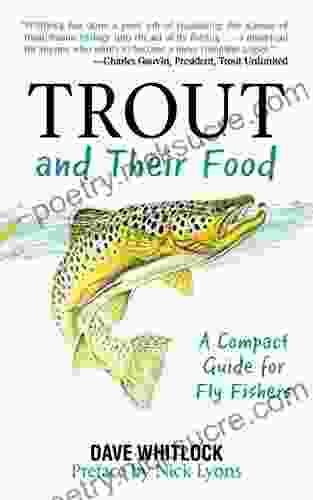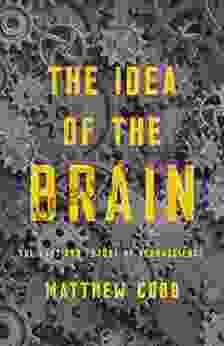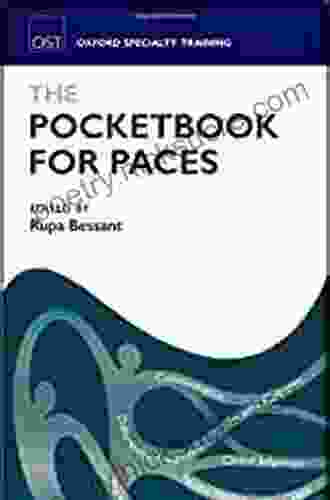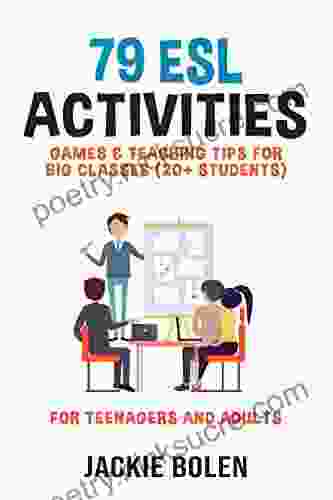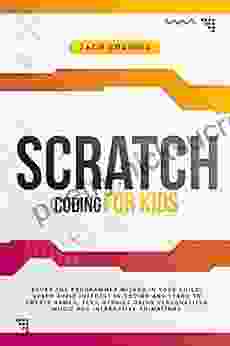Exploring the Dietary Habits of Trout: A Comprehensive Guide to Their Food Sources

Trout, a highly prized fish species esteemed by anglers and culinary enthusiasts alike, occupy a crucial position in aquatic ecosystems worldwide. Their diverse dietary habits, ranging from aquatic insects to small fish, contribute significantly to the delicate balance of their habitats. In this comprehensive article, we delve into the intriguing culinary world of trout, uncovering their feeding behaviors, food preferences, and the intricate interconnections between their diet and their environment.
Trout exhibit remarkable adaptability in their food choices, consuming a wide array of prey items based on their habitat, size, and availability. Their diet can be broadly categorized into the following groups:
Aquatic insects, including mayflies, caddisflies, and stoneflies, constitute a substantial portion of the trout's diet. These insects provide an abundant source of nutrition and energy for trout, especially during their younger life stages. Trout actively search for these insects in shallow waters, using their keen eyesight and sensitive lateral lines to detect their presence.
4.7 out of 5
| Language | : | English |
| File size | : | 45254 KB |
| Text-to-Speech | : | Enabled |
| Screen Reader | : | Supported |
| Enhanced typesetting | : | Enabled |
| Word Wise | : | Enabled |
| Print length | : | 210 pages |
Crustaceans, such as crayfish, shrimp, and amphipods, also feature prominently in the trout's dietary repertoire. Trout are adept at capturing these small, agile prey by employing their powerful jaws and sharp teeth. Crustaceans offer a valuable source of protein and calcium, contributing to the trout's overall growth and development.
As trout mature and grow in size, they progressively incorporate small fish into their diet. Species like minnows, sticklebacks, and sculpins become their preferred prey, providing a substantial source of energy and nutrients. Trout exhibit exceptional agility in chasing and capturing these fish, using their streamlined bodies and strong fins to outmaneuver their quarry.
In addition to the aforementioned food groups, trout may occasionally consume a variety of other prey, including amphibians, worms, and small rodents. These alternative food sources offer a diverse array of nutrients and help supplement the trout's diet when their primary prey items are scarce.
Trout exhibit distinct feeding behaviors and habitat preferences that are closely intertwined with their dietary habits.
Trout are opportunistic feeders that actively search for food during periods of high activity. They typically exhibit two primary feeding strategies:
Drift Feeding: Trout position themselves in areas with strong currents, facing upstream, and wait for prey to drift past them. They selectively target and capture drifting aquatic insects and small crustaceans.
Active Feeding: Trout actively pursue prey in shallow waters or near structures like vegetation or rocks. They employ a combination of speed and agility to chase and capture their targets.
The choice of habitat by trout is strongly influenced by the availability of food. They prefer areas with abundant insect hatches, crustacean populations, and small fish. Trout seek out areas with consistent water flow, clear visibility, and ample cover to facilitate their feeding activities.
The dietary habits of trout have a profound impact on the ecology of their aquatic habitats.
Trout play a crucial role in nutrient cycling within aquatic ecosystems. By consuming aquatic insects and small fish, they transfer nutrients from lower trophic levels to higher levels, contributing to the overall productivity of the ecosystem.
Trout act as natural predators of aquatic insects. Their feeding on these insects helps regulate their populations, preventing excessive insect emergence and maintaining a healthy balance within the aquatic community.
Trout serve as an important food source for larger predators, such as birds and mammals. By providing sustenance to these top predators, trout contribute to the stability and diversity of entire ecosystems.
Human activities can significantly influence the dietary habits of trout.
Habitat degradation, caused by factors like pollution, sedimentation, and dam construction, can disrupt the availability of prey for trout. Reduced food resources can lead to diminished trout populations and impaired ecosystem health.
The of invasive species, such as non-native crayfish and fish, can alter the natural prey base of trout. Competition for food resources and direct predation by invasive species can negatively impact trout populations.
Excessive fishing pressure can deplete trout populations, reducing the availability of food for remaining individuals. Overfishing can also disrupt the natural balance between trout and their prey species.
Trout occupy a central position in aquatic ecosystems, their dietary habits intricately linked to the overall health and productivity of their habitats. Their ability to consume a diverse range of prey items underscores their adaptability and ecological significance. Human activities, however, can have a profound impact on trout diet and the delicate balance of their ecosystems. By understanding the intricate dietary habits of trout and mitigating human impacts, we can ensure the long-term sustainability of these prized fish and the aquatic ecosystems they inhabit.
4.7 out of 5
| Language | : | English |
| File size | : | 45254 KB |
| Text-to-Speech | : | Enabled |
| Screen Reader | : | Supported |
| Enhanced typesetting | : | Enabled |
| Word Wise | : | Enabled |
| Print length | : | 210 pages |
Do you want to contribute by writing guest posts on this blog?
Please contact us and send us a resume of previous articles that you have written.
 Fiction
Fiction Non Fiction
Non Fiction Romance
Romance Mystery
Mystery Thriller
Thriller SciFi
SciFi Fantasy
Fantasy Horror
Horror Biography
Biography Selfhelp
Selfhelp Business
Business History
History Classics
Classics Poetry
Poetry Childrens
Childrens Young Adult
Young Adult Educational
Educational Cooking
Cooking Travel
Travel Lifestyle
Lifestyle Spirituality
Spirituality Health
Health Fitness
Fitness Technology
Technology Science
Science Arts
Arts Crafts
Crafts DIY
DIY Gardening
Gardening Petcare
Petcare Chase Hassen
Chase Hassen Julie A Ross
Julie A Ross Ann Valett
Ann Valett Geoff Greig
Geoff Greig Timothy P Schultz
Timothy P Schultz Sean Bartram
Sean Bartram Stephanie Cave
Stephanie Cave Helen E Lees
Helen E Lees Anna Ivey
Anna Ivey Luke Schumacher
Luke Schumacher Daniel Isberner
Daniel Isberner Martin N Seif
Martin N Seif Todd Radom
Todd Radom Lily Dunn
Lily Dunn Tyler Richards
Tyler Richards Ray Moynihan
Ray Moynihan Creative Guy
Creative Guy Louis Van Dyke
Louis Van Dyke Julian Havil
Julian Havil Suzanne I Barchers
Suzanne I Barchers M Shawn Copeland
M Shawn Copeland Scott Allan
Scott Allan Bruce Lockwood
Bruce Lockwood Tarani Chandola
Tarani Chandola Sajni Patel
Sajni Patel Mordecai Orimiladeye
Mordecai Orimiladeye Boye Lafayette De Mente
Boye Lafayette De Mente Joy Dawson
Joy Dawson John Yates
John Yates Monroe Wildrose
Monroe Wildrose Annaka Harris
Annaka Harris Marie Cirano
Marie Cirano Helen Adrienne
Helen Adrienne Susan M Schneider
Susan M Schneider H M Schey
H M Schey Cathy Glass
Cathy Glass C W Farnsworth
C W Farnsworth Richard A Swanson
Richard A Swanson Quinn Loftis
Quinn Loftis Charles J Sanders
Charles J Sanders Hanumant Deshmukh
Hanumant Deshmukh Gilbert J Grant Md
Gilbert J Grant Md Dan Vogel
Dan Vogel Elizabeth Wissner Gross
Elizabeth Wissner Gross Gary Chapman
Gary Chapman Lori L Tharps
Lori L Tharps George Lakoff
George Lakoff Josephine Mccarthy
Josephine Mccarthy Becky Wade
Becky Wade Caroline Miller
Caroline Miller Mary E Pearson
Mary E Pearson Chris Fregly
Chris Fregly Mikael Lindnord
Mikael Lindnord Ann Zaprazny
Ann Zaprazny The Pinnacle Review
The Pinnacle Review Anna Bright
Anna Bright Stefan Hollos
Stefan Hollos Michael F Nenes
Michael F Nenes Kristen L Mauk
Kristen L Mauk Charlene Beswick
Charlene Beswick Katharine Beals
Katharine Beals John Baichtal
John Baichtal Jill Lepore
Jill Lepore Christine Hopfgarten
Christine Hopfgarten Chris Bailey
Chris Bailey Horace Kephart
Horace Kephart Heidi Kreider
Heidi Kreider Dean Buonomano
Dean Buonomano Victor Stringer
Victor Stringer Timothy Ellis
Timothy Ellis Joshua Shifrin
Joshua Shifrin Rutger Bregman
Rutger Bregman Valerie Hansen
Valerie Hansen G Norman Lippert
G Norman Lippert Ken Robinson
Ken Robinson Lisa Randall
Lisa Randall Martin Meredith
Martin Meredith Joe Hyams
Joe Hyams Paul Bloom
Paul Bloom Jenna Evans Welch
Jenna Evans Welch Shelley Emling
Shelley Emling Louise Katz
Louise Katz Peter L Falkingham
Peter L Falkingham Lina Beard
Lina Beard Susan Spicer
Susan Spicer Nancy Marie White
Nancy Marie White Cade Courtley
Cade Courtley Richard Mcafee
Richard Mcafee Charles Dickens
Charles Dickens Will Kurt
Will Kurt Lizzie Collingham
Lizzie Collingham Harley Mcallister
Harley Mcallister Oskar Morgenstern
Oskar Morgenstern Linda K Miller
Linda K Miller Matthew Locricchio
Matthew Locricchio Wayne C Booth
Wayne C Booth Junior Health Institute
Junior Health Institute Freddy Silva
Freddy Silva John Edwards
John Edwards Anna Quindlen
Anna Quindlen Aaron Mahnke
Aaron Mahnke Jennifer L Lopez
Jennifer L Lopez Annette Burns
Annette Burns Paul Mendelson
Paul Mendelson Gill James
Gill James Dante Fortson
Dante Fortson Sally Connolly
Sally Connolly Ellen Painter Dollar
Ellen Painter Dollar C J Brown
C J Brown Stuart Tomlinson
Stuart Tomlinson Chic Scott
Chic Scott Jemar Tisby
Jemar Tisby Patrick Torsell
Patrick Torsell Ellen Dugan
Ellen Dugan Mike Reilly
Mike Reilly Genevieve Mckay
Genevieve Mckay M Terese Verklan
M Terese Verklan Christelle Dabos
Christelle Dabos Dana James
Dana James Barbara Sealock
Barbara Sealock Steven A Fino
Steven A Fino Stephen Tarsitano
Stephen Tarsitano Frank Thomas
Frank Thomas Miley Smiley
Miley Smiley Nicholas Thomas
Nicholas Thomas James Burke
James Burke Michael Labossiere
Michael Labossiere Shannon Vallor
Shannon Vallor Bella Forrest
Bella Forrest Steve Schwartz
Steve Schwartz Livia Bitton Jackson
Livia Bitton Jackson Kalman Samuels
Kalman Samuels Barak A Bassman
Barak A Bassman Dan Koboldt
Dan Koboldt Jennifer Dugan
Jennifer Dugan Trevor Hartman
Trevor Hartman Holly Bourne
Holly Bourne Caryl Phillips
Caryl Phillips Scott P Sells
Scott P Sells Prime Hall
Prime Hall Ann Marie Brown
Ann Marie Brown Mishka Shubaly
Mishka Shubaly Dr Harper
Dr Harper Ben Shneiderman
Ben Shneiderman Tim Cahill
Tim Cahill Suzanne Clark
Suzanne Clark Steven Callahan
Steven Callahan James F Twyman
James F Twyman Anna Wood
Anna Wood Fumio Sasaki
Fumio Sasaki William P Young
William P Young Bob Cary
Bob Cary Julian Of Norwich
Julian Of Norwich Good Books
Good Books Kyung Won Chung
Kyung Won Chung Todd Denault
Todd Denault Chris Gore
Chris Gore Shawn Shallow
Shawn Shallow Jenn Bennett
Jenn Bennett Michael Tan
Michael Tan Sandy Bodeau
Sandy Bodeau John Dunn
John Dunn Philip Reed
Philip Reed Anne Sylvie Malbrancke
Anne Sylvie Malbrancke Lane Demas
Lane Demas Tanmay Mehta
Tanmay Mehta Donna D Ignatavicius
Donna D Ignatavicius Gemma Bray
Gemma Bray Emily J Taylor
Emily J Taylor Larry Semento
Larry Semento Stefanie Japel
Stefanie Japel Julia Galef
Julia Galef Douglas Perry
Douglas Perry Sean Covey
Sean Covey Stacey A Shannon
Stacey A Shannon Nelson Dellis
Nelson Dellis Skeleton Steve
Skeleton Steve Darryl Belfry
Darryl Belfry Chronicle Books
Chronicle Books Anna Lowenhaupt Tsing
Anna Lowenhaupt Tsing Larry Thornberry
Larry Thornberry Barry Dainton
Barry Dainton Linda Lewis Alexander
Linda Lewis Alexander Christopher T Coughlin
Christopher T Coughlin Sandy Camillo
Sandy Camillo Eric Greitens
Eric Greitens H Jerome Chapman
H Jerome Chapman Horace Freeland Judson
Horace Freeland Judson Mark Mckinney
Mark Mckinney John Dickson
John Dickson Barry Schwartz
Barry Schwartz Jeff Kuehl
Jeff Kuehl Anna Grafl
Anna Grafl Bethany Saltman
Bethany Saltman Antonio Robert
Antonio Robert Jacob Ward
Jacob Ward Adele Faber
Adele Faber Michael Witwer
Michael Witwer Roy R Grinker
Roy R Grinker Kristina Cowan
Kristina Cowan Sheela Raja
Sheela Raja Crystal Cook
Crystal Cook Ray Eye
Ray Eye Jackie Bolen
Jackie Bolen Harold Davis
Harold Davis Thomas A Garrity
Thomas A Garrity Eddie Jones
Eddie Jones Craig Ramsay
Craig Ramsay W W Sawyer
W W Sawyer Robin Esrock
Robin Esrock Suzanne Girard Eberle
Suzanne Girard Eberle Seth Stephens Davidowitz
Seth Stephens Davidowitz Damian Hall
Damian Hall June Hur
June Hur William Goldman
William Goldman John Pullen
John Pullen Frances Schultz
Frances Schultz Paulo Guillobel
Paulo Guillobel Earl Hipp
Earl Hipp Annabel Streets
Annabel Streets Robert Gerver
Robert Gerver Henry Dillon
Henry Dillon Judy Corry
Judy Corry Illustrated Edition Kindle Edition
Illustrated Edition Kindle Edition Emmett W Hines
Emmett W Hines David Soucie
David Soucie Rick Sparkman
Rick Sparkman Tali Sharot
Tali Sharot Philip Gibson
Philip Gibson Alexander L Chapman
Alexander L Chapman Sean Purchase
Sean Purchase Steve Grant
Steve Grant Fox Fisher
Fox Fisher Scott Shupe
Scott Shupe Steve Olson
Steve Olson Bren Smith
Bren Smith Stacey Williams
Stacey Williams Richard A Ruth
Richard A Ruth R K Agarwal
R K Agarwal Elisabeth Haich
Elisabeth Haich Margaret Paul
Margaret Paul John Van Wyhe
John Van Wyhe Curtis Collins
Curtis Collins Steve Newell
Steve Newell Krista Marson
Krista Marson Alex Bromley
Alex Bromley Winton Porter
Winton Porter Susan Straub
Susan Straub Roger Hall
Roger Hall Worley Faver
Worley Faver Bert Mendelson
Bert Mendelson Matthew Cobb
Matthew Cobb Ruby Mcconnell
Ruby Mcconnell Maggie Downs
Maggie Downs Clive Scarff
Clive Scarff Tim Young
Tim Young Jessa Stone
Jessa Stone Kathy Morey
Kathy Morey Zach Codings
Zach Codings John Gignilliat
John Gignilliat Bernard Stiegler
Bernard Stiegler Sara Wickham
Sara Wickham Joyce Meyer
Joyce Meyer Janine Marsh
Janine Marsh Malcolm S Thaler
Malcolm S Thaler Ichigo Takano
Ichigo Takano College Hippo
College Hippo John O Sullivan
John O Sullivan Bob Madgic
Bob Madgic Danny Jones
Danny Jones Neel Doshi
Neel Doshi Gwen Mckee
Gwen Mckee Stan Gibilisco
Stan Gibilisco Walter Mischel
Walter Mischel Mark Matlock
Mark Matlock Jack Perconte
Jack Perconte Silvia M Lindtner
Silvia M Lindtner Zach Davis
Zach Davis Lisa Manterfield
Lisa Manterfield Michael Burnett
Michael Burnett Zena Hitz
Zena Hitz Graham Robb
Graham Robb Jennifer Kostick
Jennifer Kostick Naomi Tomky
Naomi Tomky Robert A Conover
Robert A Conover Noel D Justice
Noel D Justice Sara Dyer
Sara Dyer Paul Logothetis
Paul Logothetis Barb Musick
Barb Musick Tony Osgood
Tony Osgood Joey Myers
Joey Myers Kate Mcvaugh
Kate Mcvaugh Glen E Clarke
Glen E Clarke Nicholas Clapp
Nicholas Clapp Melissa Mortenson
Melissa Mortenson Hannah Testa
Hannah Testa L J Smith
L J Smith Jason
Jason Omari Bouknight
Omari Bouknight Vladimir Vasiliev
Vladimir Vasiliev Neal Shusterman
Neal Shusterman Claire Walter
Claire Walter James P Sethna
James P Sethna P M Gilbert
P M Gilbert Christine Field
Christine Field Sparknotes
Sparknotes Patricia Romanowski Bashe
Patricia Romanowski Bashe Angela Saini
Angela Saini George James Grinnell
George James Grinnell Matthew Rudy
Matthew Rudy Helge Kragh
Helge Kragh Nisha Garg
Nisha Garg J E Esslemont
J E Esslemont Michael G Manning
Michael G Manning Maya Van Wagenen
Maya Van Wagenen R A Salvatore
R A Salvatore Laurie Varga
Laurie Varga Eleanor J Sullivan
Eleanor J Sullivan Adil E Shamoo
Adil E Shamoo Buddy Lee
Buddy Lee Tara Haelle
Tara Haelle Dr Sarita Uhr
Dr Sarita Uhr Hill Harper
Hill Harper J Scott Long
J Scott Long Daphne Poltz
Daphne Poltz David Woods
David Woods Rebecca Carroll
Rebecca Carroll Jonathan Pd Buckley
Jonathan Pd Buckley Cb Droege
Cb Droege Peter Richmond
Peter Richmond Julie Plagens
Julie Plagens Patricia Ladis
Patricia Ladis Jay Spence
Jay Spence Breeda Bermingham
Breeda Bermingham Rebecca A Moyes
Rebecca A Moyes Stephen J Pyne
Stephen J Pyne Jonathan R Brennan
Jonathan R Brennan Christopher Seddon
Christopher Seddon Julie C Meloni
Julie C Meloni Ford R Bryan
Ford R Bryan James C Scott
James C Scott Randy J Paterson
Randy J Paterson L J Martin
L J Martin Steven G Krantz
Steven G Krantz Hope Comerford
Hope Comerford Melanie Dickerson
Melanie Dickerson Robert A Cook
Robert A Cook Kennedy Achille
Kennedy Achille Sarah Stodola
Sarah Stodola Sherry B Ortner
Sherry B Ortner E R Truitt
E R Truitt Sharman Apt Russell
Sharman Apt Russell Jay Young
Jay Young Dorothy Ours
Dorothy Ours Kass Morgan
Kass Morgan Peter Watson
Peter Watson Zoe Moore
Zoe Moore Gloria Chadwick
Gloria Chadwick Dave Whitlock
Dave Whitlock Steve Bowkett
Steve Bowkett Ann Mccallum Staats
Ann Mccallum Staats Jenny Jacobs
Jenny Jacobs Joanna Wells
Joanna Wells Robert F Boszhardt
Robert F Boszhardt Marjorie Savage
Marjorie Savage Sharon Rowley
Sharon Rowley Kristian Berg
Kristian Berg Zach Hunter
Zach Hunter Steve Oldenburg
Steve Oldenburg Lexi Ryan
Lexi Ryan Jonathan Franklin
Jonathan Franklin Randall Fitzgerald
Randall Fitzgerald Steven Munatones
Steven Munatones Susan G Solomon
Susan G Solomon L Chapman
L Chapman Kendall Coyne
Kendall Coyne Bob Labbe
Bob Labbe Annalyn Ng
Annalyn Ng Arcturus Publishing
Arcturus Publishing Pawel Malczewski
Pawel Malczewski Sukhveer Singh
Sukhveer Singh Michael Hodgson
Michael Hodgson Asker Jeukendrup
Asker Jeukendrup Morton Manus
Morton Manus Anna B Doe
Anna B Doe Dave Canterbury
Dave Canterbury Margaret Rogerson
Margaret Rogerson Carl Mckeating
Carl Mckeating Darcie Little Badger
Darcie Little Badger Anna Watson
Anna Watson Robby Weber
Robby Weber Richard Appleton
Richard Appleton James C Zimring
James C Zimring Dan Gardner
Dan Gardner Pradeepa Narayanaswamy
Pradeepa Narayanaswamy Peyton Curley
Peyton Curley L A Cotton
L A Cotton Vittal S Anantatmula
Vittal S Anantatmula Ralph Cockburn
Ralph Cockburn Jay Allan
Jay Allan Peter Hathaway Capstick
Peter Hathaway Capstick Jacqueline Winslow
Jacqueline Winslow Harnarayan Singh
Harnarayan Singh Justine Gregory Williams
Justine Gregory Williams Brian Daccord
Brian Daccord Sally Annjanece Stevens
Sally Annjanece Stevens Ling Seto
Ling Seto John Murray
John Murray Pierluigi Barrotta
Pierluigi Barrotta Melvin Fitting
Melvin Fitting Anna Flores Locke
Anna Flores Locke Julie Creffield
Julie Creffield Johnny Chuong
Johnny Chuong Steve Bennett
Steve Bennett Wendy Leo Smith
Wendy Leo Smith Katie Krimer Ma Lcsw
Katie Krimer Ma Lcsw Reinhard Kleist
Reinhard Kleist Peter Wacht
Peter Wacht Anna Della Subin
Anna Della Subin Jackson Carter
Jackson Carter Anna Crowley Redding
Anna Crowley Redding Les Livingstone
Les Livingstone Lily Siou
Lily Siou Dave Hall
Dave Hall Sally Black
Sally Black Roy M Wallack
Roy M Wallack Karen Bassie Sweet
Karen Bassie Sweet Richard C Schwartz
Richard C Schwartz Guy Windsor
Guy Windsor Ralph Waldo Emerson
Ralph Waldo Emerson Dave Hughes
Dave Hughes Holly Chism
Holly Chism Steven Yellin
Steven Yellin Rick Page
Rick Page Ann Voskamp
Ann Voskamp Margaret Jean Langstaff
Margaret Jean Langstaff Illysa R Foster
Illysa R Foster Finn Aagaard
Finn Aagaard Ian Moulding
Ian Moulding Sam Demas
Sam Demas Ariel Dalfen
Ariel Dalfen Mike Roberts
Mike Roberts Marva Boatman
Marva Boatman Howard Means
Howard Means Geryn Childress
Geryn Childress Jean Barbre
Jean Barbre Isaac Fitzsimons
Isaac Fitzsimons David Berry
David Berry Christina Henry De Tessan
Christina Henry De Tessan Dannah Gresh
Dannah Gresh
Light bulbAdvertise smarter! Our strategic ad space ensures maximum exposure. Reserve your spot today!
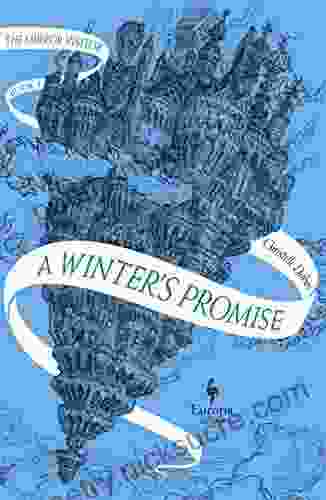
 Salman RushdieDiving into the Enchanting Realm of One of the Mirror Visitor Quartet: A...
Salman RushdieDiving into the Enchanting Realm of One of the Mirror Visitor Quartet: A... Javier BellFollow ·8.7k
Javier BellFollow ·8.7k Beau CarterFollow ·6.7k
Beau CarterFollow ·6.7k Stephen KingFollow ·14.7k
Stephen KingFollow ·14.7k Ernest ClineFollow ·10.9k
Ernest ClineFollow ·10.9k Rob FosterFollow ·17.8k
Rob FosterFollow ·17.8k Dylan MitchellFollow ·8.5k
Dylan MitchellFollow ·8.5k Melvin BlairFollow ·16.2k
Melvin BlairFollow ·16.2k Kevin TurnerFollow ·17.4k
Kevin TurnerFollow ·17.4k
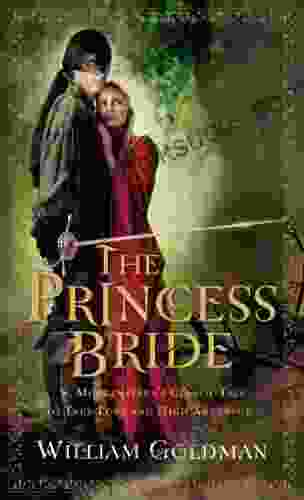
 Aldous Huxley
Aldous HuxleyMorgenstern: A Classic Tale of True Love and High...
Morgenstern is a...
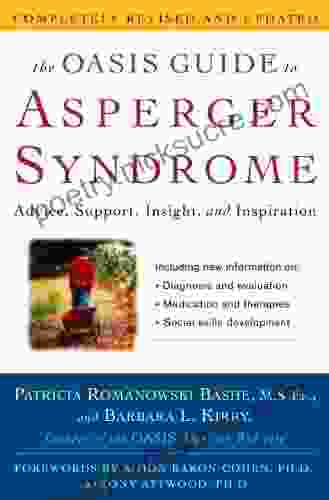
 Beau Carter
Beau CarterThe Oasis Guide to Asperger Syndrome
What is Asperger Syndrome? Asperger...
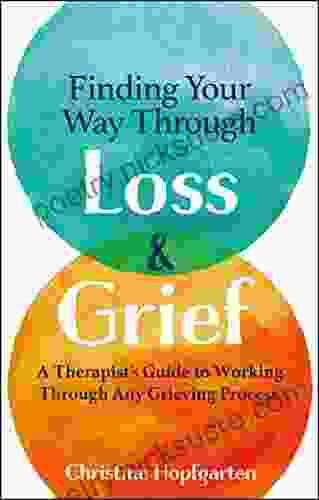
 Chadwick Powell
Chadwick PowellFinding Your Way Through Loss Grief: A Therapist S Guide...
Grief is a natural human emotion that we...
4.7 out of 5
| Language | : | English |
| File size | : | 45254 KB |
| Text-to-Speech | : | Enabled |
| Screen Reader | : | Supported |
| Enhanced typesetting | : | Enabled |
| Word Wise | : | Enabled |
| Print length | : | 210 pages |


